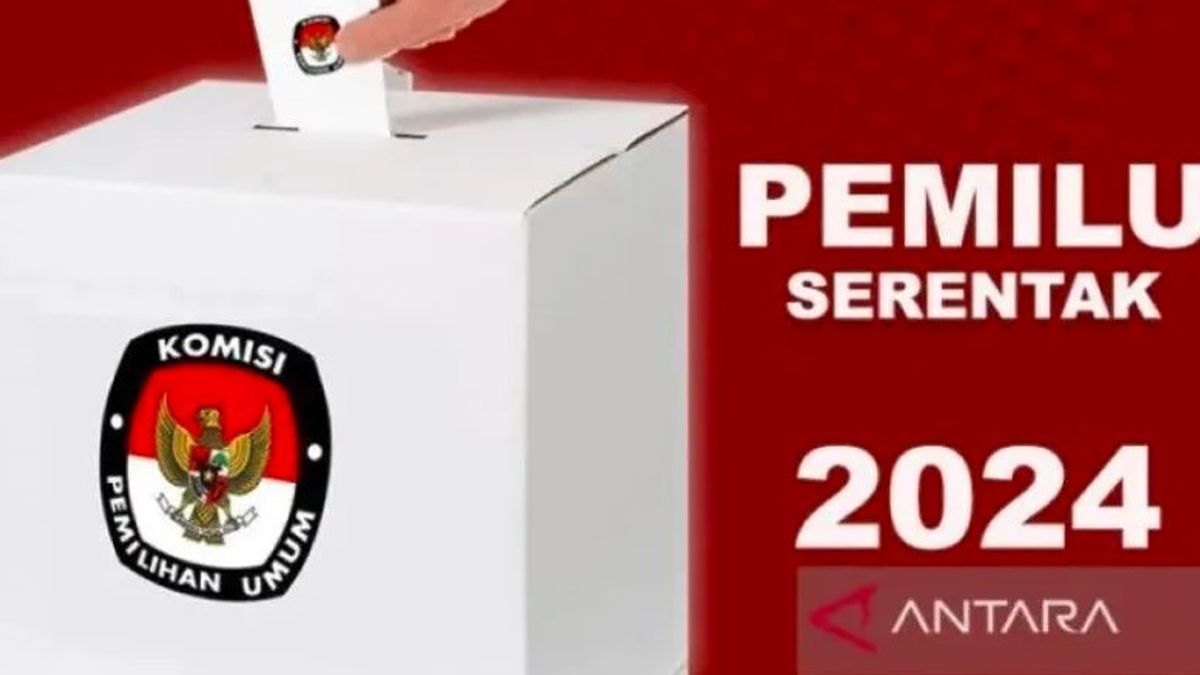YOGYAKARTA - Have you ever heard of the Electoral threshold? Then, what is the electoral threshold?
The reason is, the Electoral threshold whose Indonesian language is "Ambang Election" is the minimum number of votes that a party or candidate must obtain to get a seat in the legislature.
In the electoral system such as the first past the past, there is no election limit. Because, candidates only need to win the most votes in their respective constituencies, not a certain percentage of the total vote.
However, there is another electoral system that requires candidates to successfully receive the minimum percentage of the total vote. One example is in the proportional representative system of the party list where the seat won by a party in the legislature is comparable to the number of their votes.
Countries such as Germany, which use this system, require parties to reach a minimum of 5% of the total votes to get seats in the Bundestag - Germany's lower house of parliament. So, if a party only gets 4.8% of the national vote, as the Free Democratic Party did in 2013, they will not get a seat allocation.
Supporters of the implementation of the election threshold argue that it contributes to maintaining the stability of the political system by removing parties on the outskirts or extremists from parliament. However, opponents argue that such exceptions fail to reflect the diversity of opinions in democratic society.
According to Law Number 7 of 2017?halAround the Election (General Election), the electoral threshold is determined at 4% (four percent) of the total nationally legal sound. With this law, it is possible that the optimal number of political parties that can pass the electoral threshold will be 25 political parties.
But it's just a "theorism". Because in reality it's almost impossible that there will be many political parties that have 4% of the vote.
The acquisition of political parties cannot be the same as much, evenly. There are political parties that have a lot of sound because they have a large and strong support base from the people. But there are also political parties that have few votes because they do not have enough support from the people.
Electoral threshold actually explicitly reflects the people's "will". That the people of essence do not expect many political parties in the election.
Example
This can be seen from the vote of political parties from election to election (in the Reformation Era). Although the electoral threshold in some elections is different.
In the 1999 Election. At that time the electoral threshold used was 2.5% of the total nationally legal sound. The political parties that met the electoral threshold at that time amounted to less than 10 political parties, namely only 6 (six) political parties.
The six political parties are PDI-P (33.74%), Golkar Party (22.44%), PKB (12.61%), PPP (10.71%), PAN (7.12%), and PBB (1.94%). (PB passed because the accumulation of seats in parliament was more than 2.5%, namely 2.81%).
In the 2004 election. At that time, the electoral threshold was increased to 3% of the total official votes nationally. Political parties that meet the electoral threshold rose to 7 political parties. But also less than 10 political parties.
The seven political parties are the Golkar Party (21.62%), PDI-P (18.31%), PKB (12.61%), PPP (8.16%), Democratic Party (7.46%), PKS (7.20%), and PAN (6.47%).
In the 2009 election. At that time, the electoral threshold used was still 3% of the total official votes nationally. Political parties that meet the electoral threshold rose again to 9 political parties. But also less than 10 political parties.
The nine political parties are the Democratic Party (20.85%), Golkar Party (14.45%), PDI-P (14.03%), PKS (7.88%), PAN (6.01%), PPP (5.32%), PKB (4.94%), Gerindra Party (4.46%), and Hanura Party (3.77%).
Next in the 2014 election. The electoral threshold used was increased to 4% of the total official votes nationally. The political party that meets the electoral threshold has increased again to 10 political parties, exactly.
The ten political parties are PDI-P (18.95%), Golkar Party (14.75%), Gerindra Party (11.81%), Democratic Party (10.19%), PKB (9.04%), PAN (7.59%), PKS (6.79%), Nasdem Party (6.72%), PPP (6.53%), and Hanura Party (5.26%).
Lastly in the 2019 Election. Electoral threshold which is used consistently is 4% of the number of official votes nationally. Political parties that meet electoral threshold decreased from before. Political parties that meet the electoral threshold are the same as the 2009 election, namely 9 political parties.
The nine political parties are PDI-P (19.33%), Gerindra Party (12.57%), Golkar Party (12.31%), Nasdem Party (9.05%), PKB (9.69%), PKS (8.21%). ), Democratic Party (7.77%), PAN (6.84%), and PPP (4.52%).
According to the circulation of the sound from elections to elections above, there has never even been a political party that has passed the electoral threshold of more than 10 political parties. This means that it is understood that relatively the number of political parties that the people expect to have optimally is only 10 political parties or below 10 political parties. That is the number of "right" political parties according to the electoral threshold.
After knowing what an electoral threshold is, see other interesting news only on VOI, it's time to revolutionize news!
The English, Chinese, Japanese, Arabic, and French versions are automatically generated by the AI. So there may still be inaccuracies in translating, please always see Indonesian as our main language. (system supported by DigitalSiber.id)













